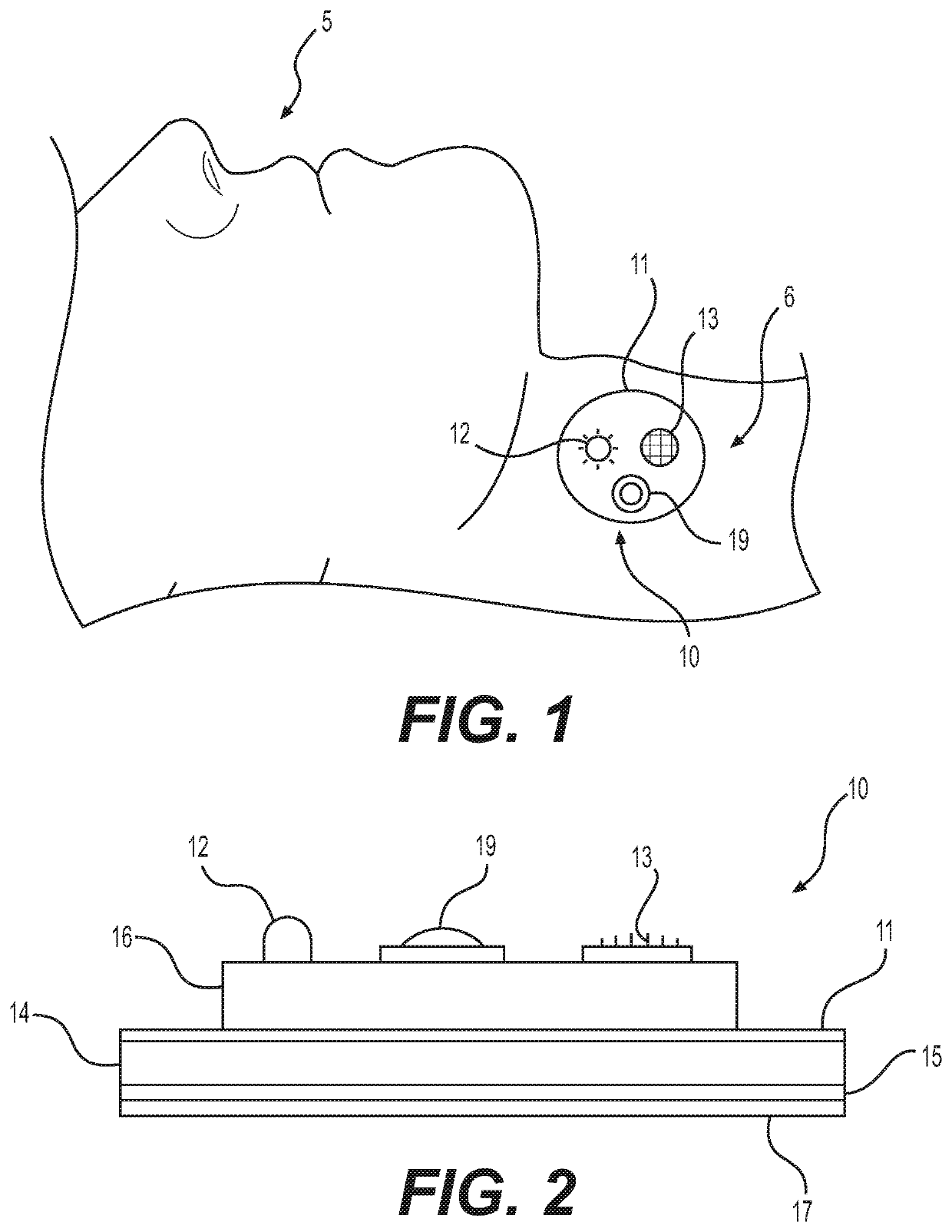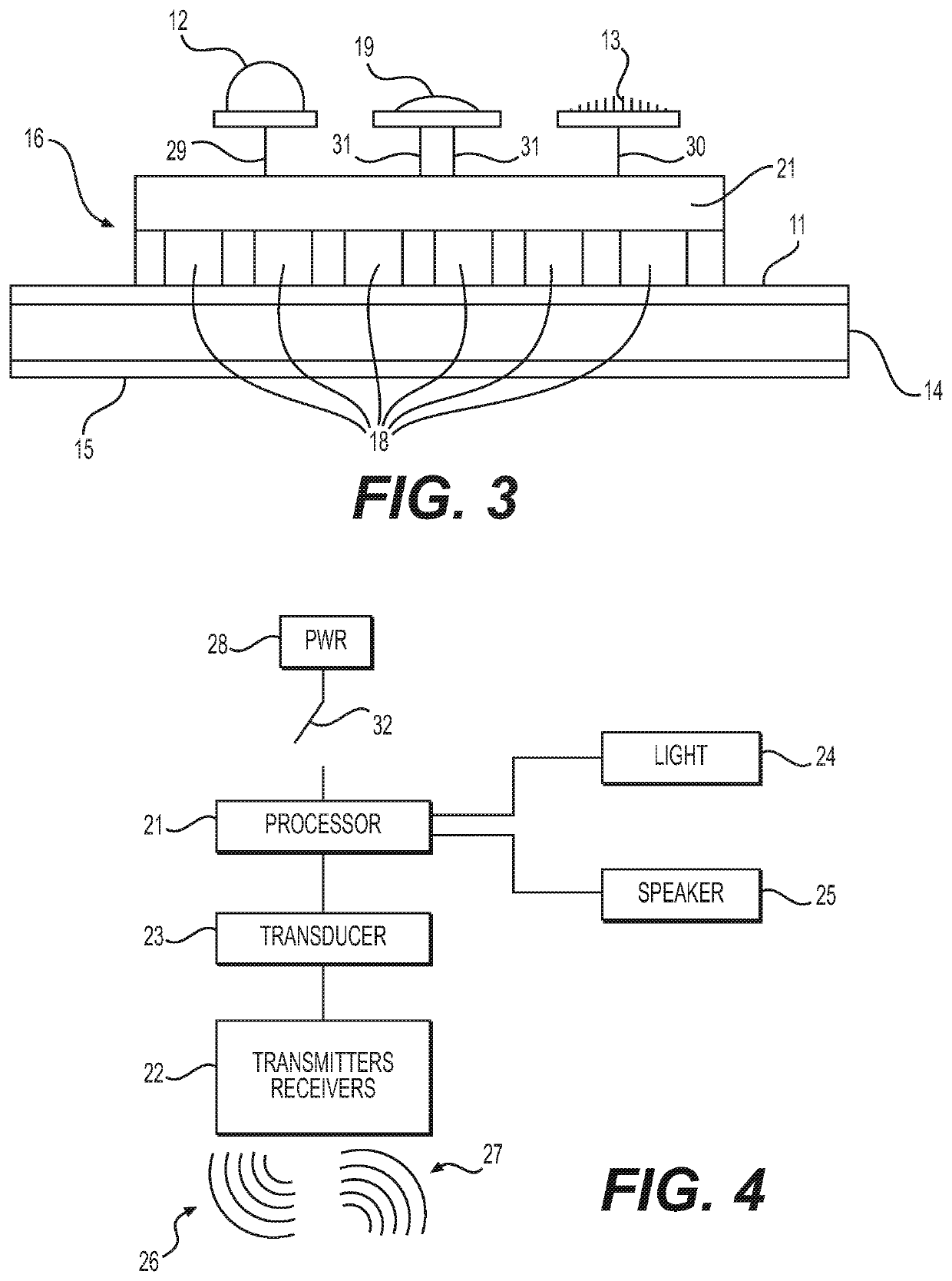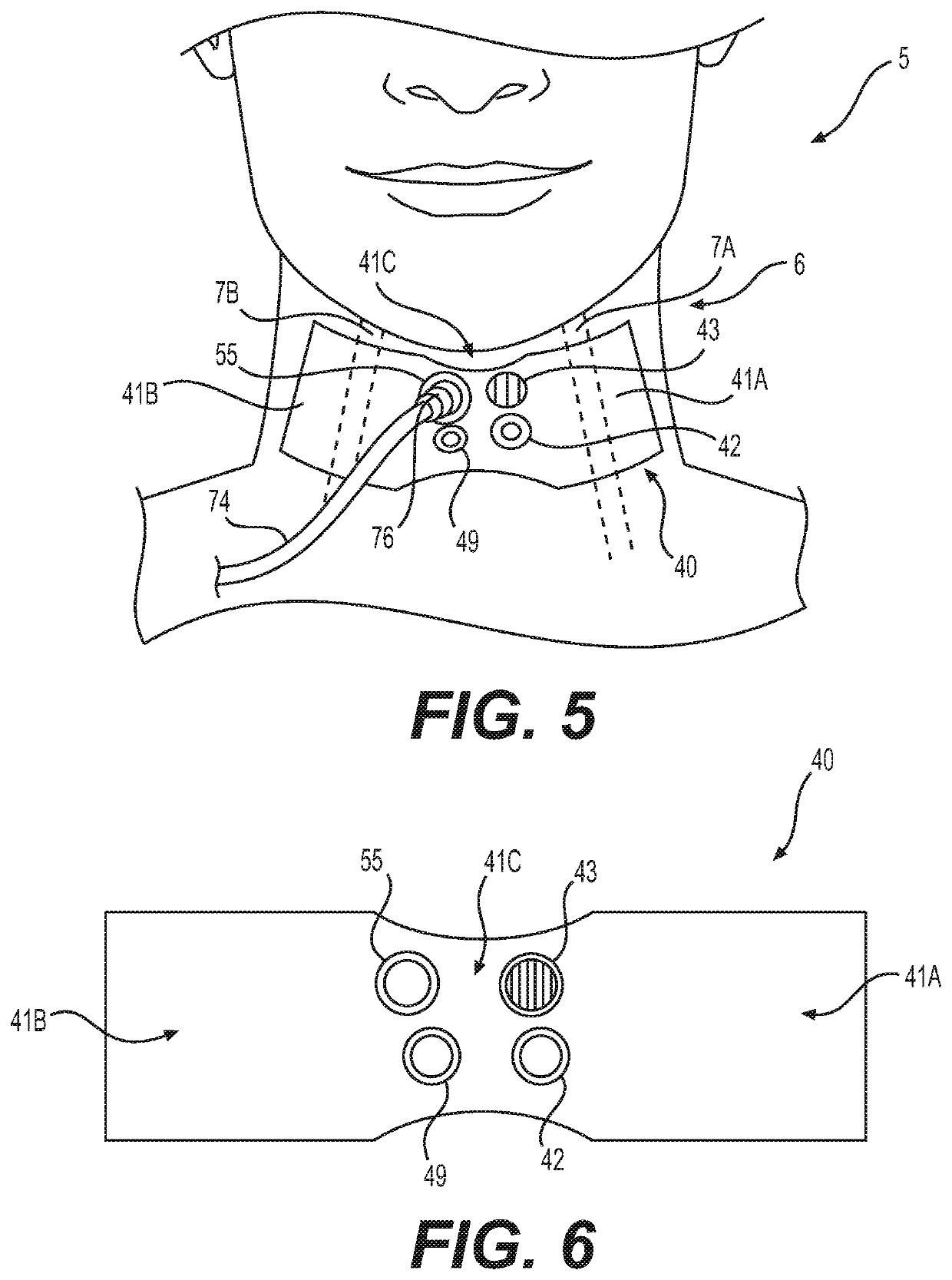Stand-alone continuous cardiac doppler and acoustic pulse monitoring patch with integral visual and auditory alerts, and patch-display system and method
a cardiac doppler and acoustic pulse technology, applied in the field of stand-alone continuous cardiac doppler and acoustic pulse monitoring patch, can solve the problems of difficult physical palpitation of pulse, high time sensitive decision to initiate cpr or other procedures to treat cardiac arrest, and high cost, and achieves fast and reliable means of detection. , the effect of less expensiv
- Summary
- Abstract
- Description
- Claims
- Application Information
AI Technical Summary
Benefits of technology
Problems solved by technology
Method used
Image
Examples
Embodiment Construction
[0039]FIG. 1 shows the stand-alone continuous Doppler heart monitor patch 10 applied to the side of the neck of a patient 5. In this position, the monitor 10 will be close to the subject's neck artery 6, the right common carotid artery 7B shown in FIG. 5, which is one of the better arteries for detecting a pulse. The carotid artery is a useful position to detect pulse, since it leaves the subject's chest free for CPR or other procedures to address cardiac arrest. The monitor 10 may be placed over other arteries, such as the femoral or radial arteries. When the on / off switch 19 is turned to the on position, the monitor 10 is placed over the subject's neck artery 6 and will begin transmitting ultrasonic signals and detecting their reflections. When blood is flowing, the Doppler effect on the reflected signals will be identified by the monitor's 10 circuitry (16 in FIGS. 2 and 3), described below, as indicative of the blood's flow velocity, as well as of the frequency of pulses as puls...
PUM
 Login to View More
Login to View More Abstract
Description
Claims
Application Information
 Login to View More
Login to View More - R&D
- Intellectual Property
- Life Sciences
- Materials
- Tech Scout
- Unparalleled Data Quality
- Higher Quality Content
- 60% Fewer Hallucinations
Browse by: Latest US Patents, China's latest patents, Technical Efficacy Thesaurus, Application Domain, Technology Topic, Popular Technical Reports.
© 2025 PatSnap. All rights reserved.Legal|Privacy policy|Modern Slavery Act Transparency Statement|Sitemap|About US| Contact US: help@patsnap.com



